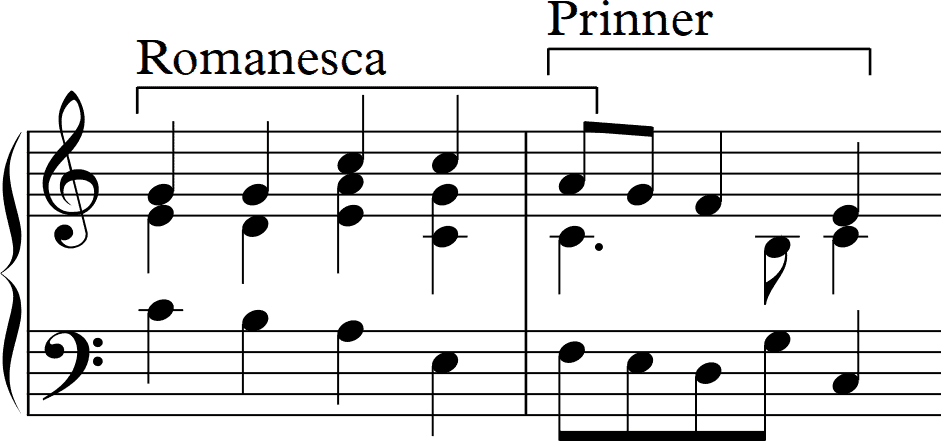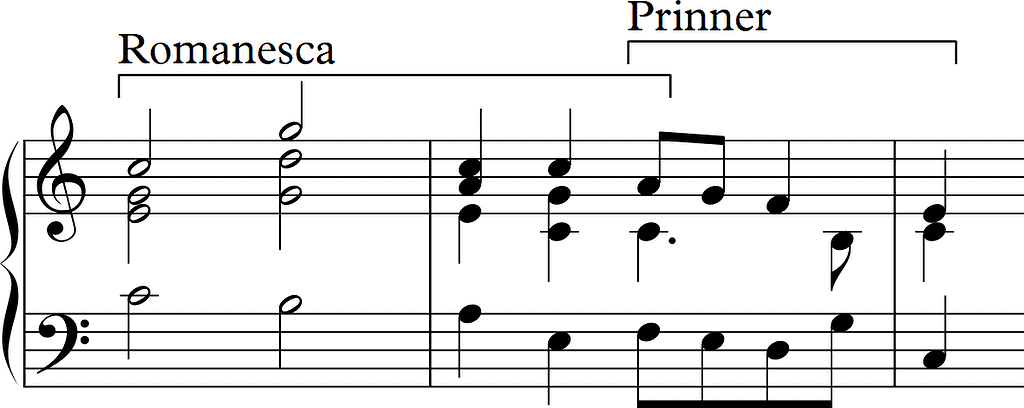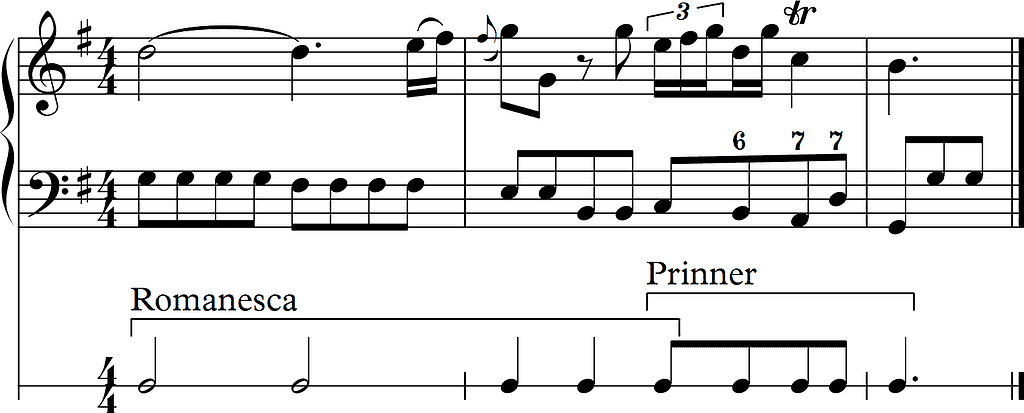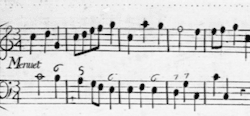This essay discusses some examples given by Robert O. Gjerdingen in his book Music in the Galant Style of a Romanesca followed by a Prinner.
A typical galant pair of schemata is that in which a Romanesca begins a composition (a proposta schema) and is followed —or ’answered’— by a Prinner (a risposta schema).
For more information on the Romanesca and the Prinner see my series of essays on these schemata.
The Romanesca-Prinner combination is a common opening of eighteenth-century compositions. In terms of harmonic rhythm, there is usually an acceleration towards the end of this combination: often the harmonic rhythm of the Prinner is twice as fast as that of the preceding Romanesca.


The acceleration of the harmonic rhythm can already occur in the Romanesca. The following two examples show a Romanesca where the first two notes/chords are twice as long as the next two (half notes versus quarter notes). In turn, the harmonic rhythm of the subsequent Prinner —in eighth notes— is twice as fast again as that of the second half of the Romanesca.


The combination Romanesca + Prinner is often followed by a modulating Prinner, which smoothly introduces the dominant key and usually has a slower harmonic rhythm than the regular Prinner.

The following example illustrates the combination Romanesca + Prinner + modulating Prinner (with a slower harmonic rhythm and High ➋ Drop in bar 7) in a 3/4 time signature:

Further Reading (Selection)
Gjerdingen, Robert O. Music in the Galant Style (New York: Oxford University Press, 2007).
IJzerman, Job. Harmony, Counterpoint, Partimento: A New Method Inspired by Old Masters (New York: Oxford University Press, 2018).
